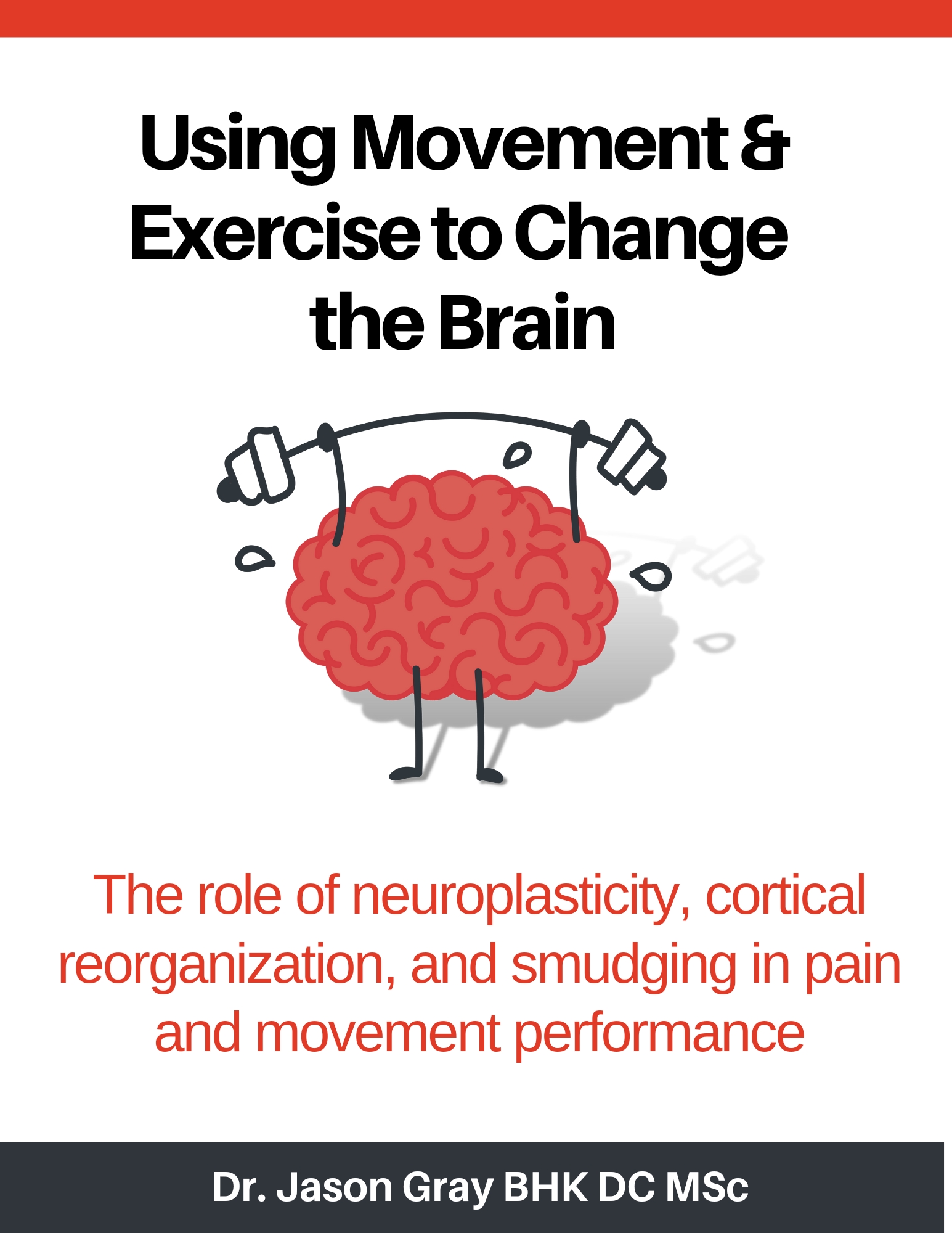Free eBook
Using Movement & Exercise To Change The Brain
The role of neuroplasticity, cortical reorganization, and smudging in pain and movement performance
Exercise has a tremendous ability to improve the body. To increase mobility, build strength, and create a healthier and more resilient movement system.
But we now know that the benefits of exercise go far beyond the body. Exercise can also change the brain. This has significant implications in the treatment of pain and health promotion.
Using Movement And Exercise To Change The Brain
It has been long recognized that the brain plays a critical role in the experience of pain. But advances in imaging technology have provided a much deeper understanding of this relationship. And we now know that as pain persists the brain undergoes extensive reorganization.
This “smudging” affects the processing of incoming sensory information as well as motor output and muscle control. These processes can amplify and extend the pain experience long past known injury healing.
But this brain neuroplasticity also has an upside. The very fact that the brain can change and reorganize makes it a powerful target for treatment. And movement (a.k.a. exercise) is one of the most powerful stimuli that can do this.
But there’s a catch…
Not all exercises will do this. Traditional stretches and exercises won’t be impactful here. In fact, it seems there are several crucial requirements that must be met to change the brain. And planks, bridges, and yoga won’t do it.
This is the subject of this eBook. Here are the key topics we’ll cover.
- The role of movement and sensory input in brain structure and function
- The role of neuroplasticity and smudging in pain and motor performance
- Using movement and exercise to change the brain (what works and what won’t)
- Putting Theory Into Practice: A novel approach to lower back pain

